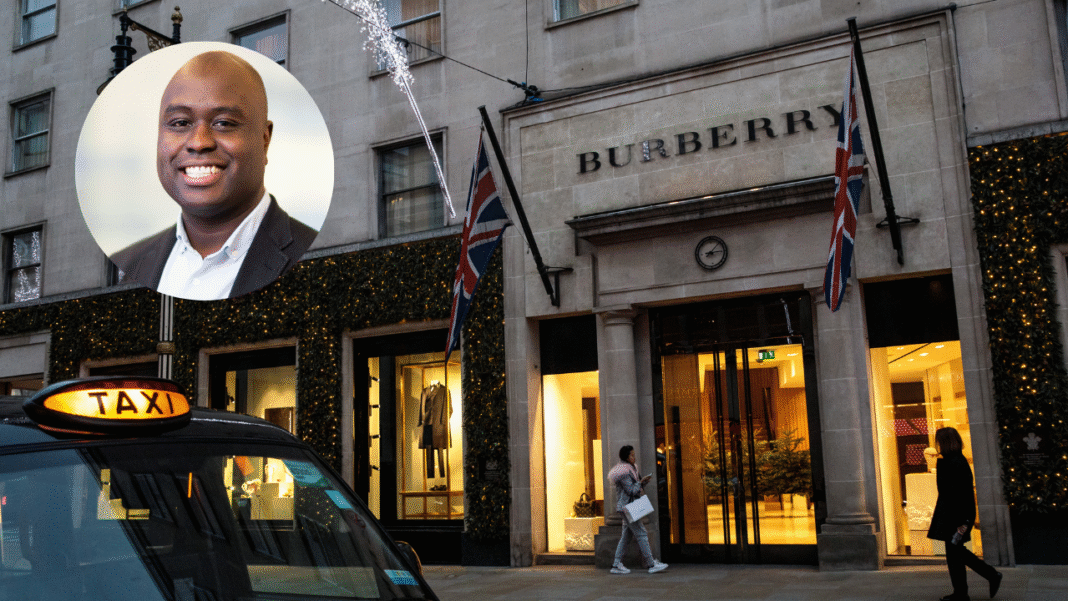Burberry’s Shift in Diversity Leadership: What It Means for the Fashion Industry
Baby shower fashion may not hit the same after the latest news coming from the Burberry luxury brand, as their recent restructuring indicates a significant shift in their approach to diversity, equity, and inclusion (DEI). Geoffrey Williams, formerly the global vice-president of colleague attraction and inclusion, is being phased out of his role as part of a broader overhaul, which also poses potential risks to over 1,700 jobs within the company.
The Change in Leadership
As reported by The Times, a respected UK news outlet, Williams’ departure is part of Burberry’s cost-cutting measures, projected to reduce the workforce by approximately 20 percent by 2027. Williams, who joined Burberry in April 2022, initially focused on DEI as part of his role before transitioning to lead the brand’s broader talent strategy.
In his statement, Williams emphasized that the decision to dissolve the head of DEI role is part of an effort to integrate DEI across all business functions. He stated, “This reflects a belief that DEI should be embedded throughout the culture and owned by leaders across the business.” His vision indicates a shift towards a more decentralized approach, aiming for sustainability in the brand’s cultural initiatives.
The Implications of Job Cuts
The potential elimination of 1,700 roles poses significant challenges not only for employees but for Burberry’s reputation as a luxury brand committed to inclusivity. While minimizing costs is often a priority in challenging economic times, such drastic measures can lead to a backlash from consumers who value diversity and corporate responsibility.
Burberry’s choice to eliminate a specific DEI position may signal to the market how companies are weighing the importance of these initiatives against financial objectives. The balance is delicate, especially in an age where consumers are increasingly conscientious about the brands they support.
Williams’ Background and Accomplishments
Geoffrey Williams brought a wealth of experience to Burberry, having previously led DEI strategies at notable firms like Dr. Martens and Thomson Reuters. His reputation as a respected leader in this arena was further solidified by his roles outside of fashion, including his position as chairman of the Bernie Grant Arts Centre and co-founder of the social enterprise Rocking Ur Teens.
During his time at Burberry, Williams established various initiatives and partnerships aimed at enhancing the brand’s commitment to diversity. He has assured stakeholders that these efforts will persist, outlining a roadmap for integrating DEI into the fabric of Burberry’s corporate strategy.
Industry Trends: A Growing Pattern
Burberry’s restructuring mirrors a broader trend observed within the UK and the US, where several companies are reconsidering their DEI commitments. Influenced by changing political landscapes, including executive orders from former President Trump, brands like Target, Amazon, and Meta have faced scrutiny over their earlier commitments to DEI.
Conversely, some companies resist the rollback of these initiatives. Deloitte UK and Barclays have reaffirmed their commitments to DEI, indicating a divergence in industry response. This may create a competitive edge for firms that maintain a holistic approach to inclusivity, reinforcing the idea that a strong commitment to diversity can enhance brand loyalty and public perception.
The Future of DEI in Fashion
As Burberry navigates this transition, the fashion industry watches closely. The luxury sector has historically been scrutinized for its lack of diversity, making any change in DEI policy especially significant. The question remains whether Burberry’s shift will inspire similar changes among its competitors or compel them to reinforce their commitment to diversity.
In a world increasingly concerned with authenticity and corporate ethicality, the decisions made by major brands like Burberry will undoubtedly influence consumer expectations and behaviors moving forward. The efficacy of this integration of DEI into broader business practices will be critical and could serve as a model—or a cautionary tale—for the industry at large.



